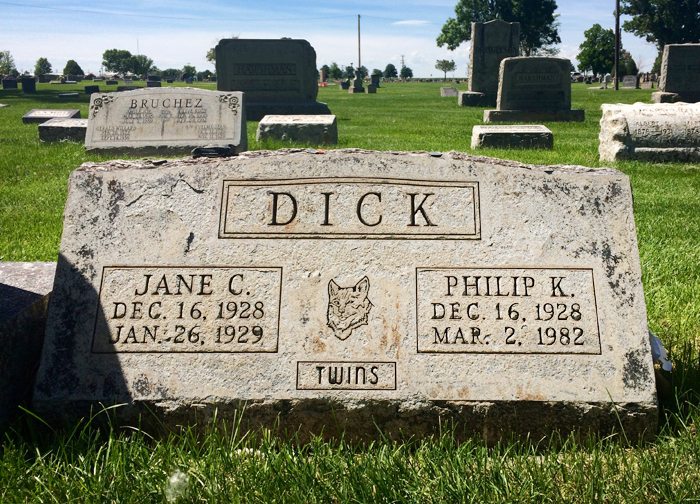In February 1974, three-eyed extraterrestrial time travelers entered Philip K. Dick’s bedroom through a portal of pink light. “Trying to make sense of it, he wrote an 8,000 page commentary he called his Exegesis. In it, he proposed that the source of the pink light may have been God, the KGB, a satellite, aliens, a 1st century Christian named Thomas with whom he was in telepathic communication, the CIA, a version of himself from a different dimension, or possibly his deceased twin sister contacting him from the spirit world.”

Riverside Cemetery, Fort Morgan, Colorado, 2016
So was Dick a madman or a mystic?
Kyle Arnold, a psychologist at Coney Island Hospital and Clinical Assistant Professor of Psychiatry at SUNY Downstate Medical Center, wrote a “psychobiography” of Dick to get to the bottom of it. In it, he recounts “the author’s mental illnesses one by one, including anorexia, paranoia, severe anxiety, vivid hallucinations, suicidal tendencies, and violent outbursts followed by amnesia.”
What ultimately did him in wasn’t mental illness or suicide, but something far more pedestrian: a stroke—less than four months before the theatrical release of Blade Runner, which was based on Dick’s 1968 novel Do Androids Dream of Electric Sheep?.
Long one of my favorite authors, I finally got a chance to visit his grave a couple of months ago. Though I had neither a mystical experience nor a spiritual awakening, I can report that the site—in a quiet corner of a cemetery in a small town on the windswept plains of northeastern Colorado—is peaceful. Which, really, is what Philip K. Dick needed most of all.

